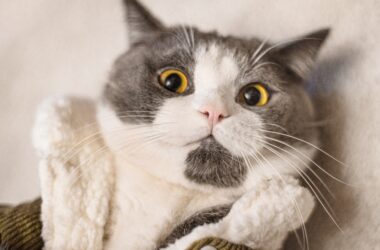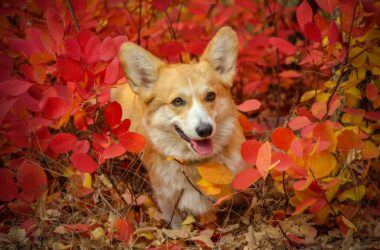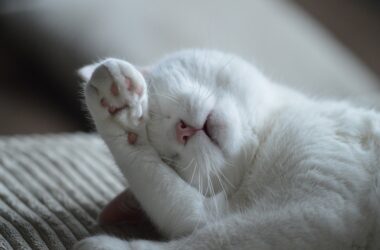Rabbits have woven themselves into the tapestry of human culture, appearing prominently in folklore and mythology across diverse societies. For instance, in Chinese folklore, rabbits symbolize good fortune and fertility, and their presence is considered an auspicious omen. Meanwhile, in Japanese culture, the rabbit holds a symbolic connection to the moon and longevity, representing enduring life. However, in Native American traditions, rabbits often take on a persona associated with trickery and cleverness.
Owning a rabbit comes with a multitude of benefits. These charming creatures are low-maintenance pets, easily trainable to use a litter box, which can significantly simplify the responsibilities of pet ownership. Their quiet demeanor further endears them to individuals residing in apartments or other close-knit living spaces.

Early Encounters: From Hunt to Hearth
In the Paleolithic era, humans interacted with rabbits primarily through hunting, as depicted in cave paintings from that time. These artworks often showcase rabbits alongside other animals that were hunted for sustenance and materials, indicating that rabbits were initially perceived as a valuable resource for their meat and fur. This early connection reflects the basic survival needs of our ancestors.
As human societies progressed and adopted agricultural practices, there was a shift in the relationship with rabbits. The text suggests that during this evolution, humans started keeping rabbits in captivity. Although this behavior change could be attributed to the realization that rabbits could serve additional purposes beyond being hunted for food and fur. The captive rabbits might have been utilized for both their meat and for controlling pests, showcasing a more diversified and sustainable interaction between humans and rabbits. This shift implies an adaptation to changing societal needs and the recognition of the benefits that rabbits could offer beyond their role in the hunter-gatherer lifestyle of early humans.
Medieval Menageries and Monastic Munching
Jumping ahead to the Middle Ages, rabbits became a common sight around European castles and monasteries. People still liked them for their practical benefits, but now they were also admired for looking nice. They lived in fancy homes called warrens and were even shown off in artworks like tapestries and paintings.
There’s a story that says monks bred and ate rabbits during Lent, but newer research says it was probably the rich and noble folks who saw rabbits as a tasty alternative to meat. So, rabbits became not just useful but also kind of fancy and fashionable during this time.

From Utility to Companionship: The Rise of the Pet Bunny
During the Renaissance, there was a notable shift in how people perceived and interacted with bunnies. Originally seen as practical farmyard animals, bunnies underwent a significant transformation, evolving into beloved companions. This change was most pronounced among the aristocracy, who developed a fondness for these furry creatures and started keeping them as pampered pets in their homes.
This trend didn’t remain exclusive to the upper class. Over time, the practice of keeping pet bunnies trickled down to the middle classes. By the 19th century, it had become quite common to find pet rabbits in Victorian households. This marked a departure from the traditional view of bunnies as utilitarian animals and highlighted a growing recognition of their capacity to provide companionship. The shift from utility to companionship reflects changing societal attitudes towards animals and the increasing importance placed on the emotional connection between humans and their pets.
Modern-Day Bunnies: Hopping into Our Hearts
Nowadays, bunnies are all the rage. We don’t just view them as creatures on farms or cute oddities; they’re cherished as part of our families. People adore them for their calmness, smartness, and the fact that they can be surprisingly easy to teach. Bunnies have become true family favorites, capturing the affection of folks all over the globe.
Beyond the Domestic Sphere: Bunnies in Art and Culture
Bunnies have ventured beyond the confines of our homes, making a significant impact on art and culture. Consider the playful Bugs Bunny or the mysterious White Rabbit from Alice’s Adventures in Wonderland – these bunny characters have captured our imagination for quite some time. They go beyond being cute animals; they’ve become symbols representing concepts like new beginnings, renewal, and even a touch of cleverness. In doing so, these fluffy creatures add a touch of enduring magic and intrigue to our stories and creative thoughts. Their presence in art and culture highlights the diverse and meaningful ways in which bunnies have woven themselves into the fabric of human expression and storytelling.

Conclusion: A Legacy of Love and Leap
Bunnies’ journey through history is a testament to their adaptability and enduring appeal. From humble beginnings as hunted prey to their current status as cherished companions. And bunnies have hopped their way into our hearts and homes. As we continue to learn more about and appreciate these remarkable creatures. And one thing is certain: the bunny’s place in human history is far from over. So next time you cuddle your furry friend, remember the rich and fascinating legacy that stretches back through the centuries. A legacy of love, leaps, and the enduring magic of bunnies.





